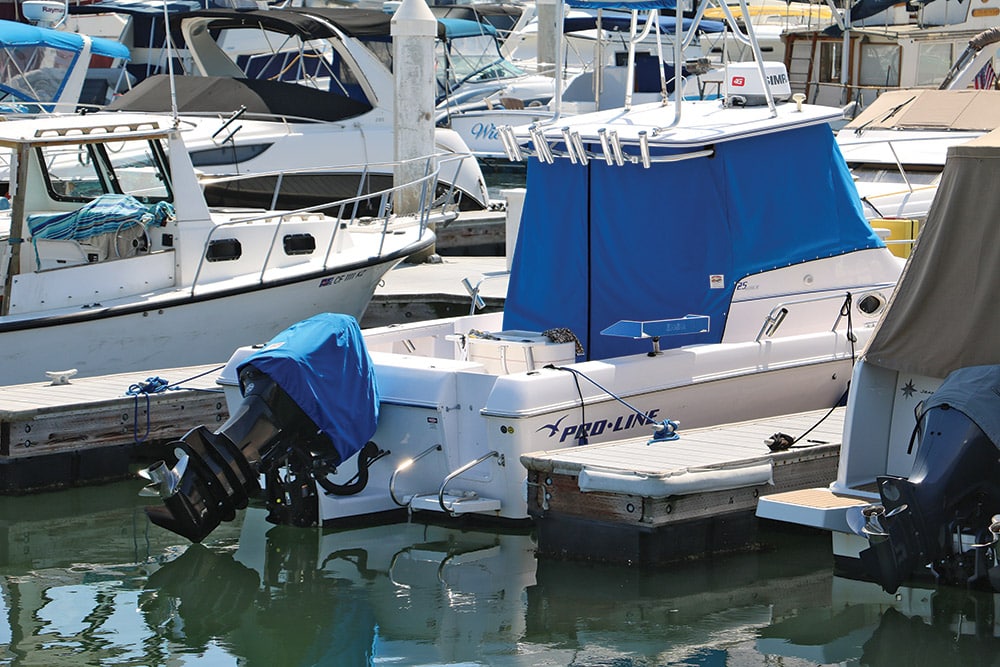
Imagine the heartache of finding your boat stripped of its electronics, leaving your helm with vacant cutouts and tangles of snipped cables and wires, the sad remnants of larceny.
Such scenes seem to be occurring too often as thieves increasingly eyeball -marine electronics, -particularly -multifunction displays, to turn a quick profit on the black market.
“MFDs are highly -visible, they cost thousands of -dollars, and are essentially -bolted to their host boats,” says Daniel Harper, founder and CEO of Siren Marine, which markets -electronic security and monitoring systems. Indeed, a 16-inch MFD retails for as much as $6,000, and many saltwater fishing boats are equipped with two, three or more.
Many thefts occur while a boat is in winter storage, says Scott Croft, vice president of public affairs for BoatU.S., so theft prevention takes on greater impetus this time of year.
The trend toward flush-mounted MFDs is a contributing factor. Though aesthetically pleasing, this installation makes it inconvenient to -remove electronics for safekeeping.
Another factor in the thieves’ favor is portability. An MFD is easy to transport and difficult to trace. Once a boat’s electronics disappear, they’re rarely recovered. How can you protect your own electronics from theft? Here are eight steps you can take.
Cover Your Boat
In addition to locking up your console or cabin, putting a cover on your unattended boat eliminates any -visual targets. A would-be thief has no idea whether there’s anything worth stealing underneath. Removing a well-secured canvas cover takes more time and can attract attention—two things that thieves avoid.
Befriend the Locals
If you keep your boat in a marina, take the time to get acquainted with your dock mates, particularly those who live aboard their boats. Like a neighborhood watch, these individuals can serve as your eyes and ears day and night while you’re away from your boat. Swap phone numbers and encourage your neighbors to call you anytime they see suspicious activity. And be sure to ask how you can return the favor.
Home Storage
Storing your boat at home—on a trailer in your backyard or at a dock behind the house—increases security. Keeping your boat on a lift behind the house is even better. Vigilant neighbors can maintain a watch. Home-security devices, such as motion lights and security cameras, also deter larceny, as does a dog with a loud bark. A “Beware of Dog” sign spooks most would-be thieves. Avoid social media posts that reveal you’re on vacation, which can tip off opportunistic thieves.
Yard Security
Boats stored in yards or in a dry stack are among the most vulnerable to electronics theft. Most offer a fenced perimeter, locks on the gates, and razor wire atop the walls, but look for -additional security measures, including bright lighting, 24-hour video surveillance, -perimeter beams to alert security companies, and security guards or dogs patrolling the premises during off hours. Don’t back up to a chain-link or wooden fence on the property line, because thieves will quickly cut through these meager defenses. If you use dry-stack storage, ask for a slot on the upper levels that makes access difficult.
When Traveling
When hitting the road with your boat on a trailer, don’t park overnight in a dark alley or far-off corner of a launch-ramp parking lot, says Scott Heffernan, vice president for the GPS Store. If you’re planning to stay in a marina as a short-term transient guest, choose one that provides a basic level of security—well-lit docks and common areas, -security cameras and locking entry gates—to prevent strangers from roaming the docks.
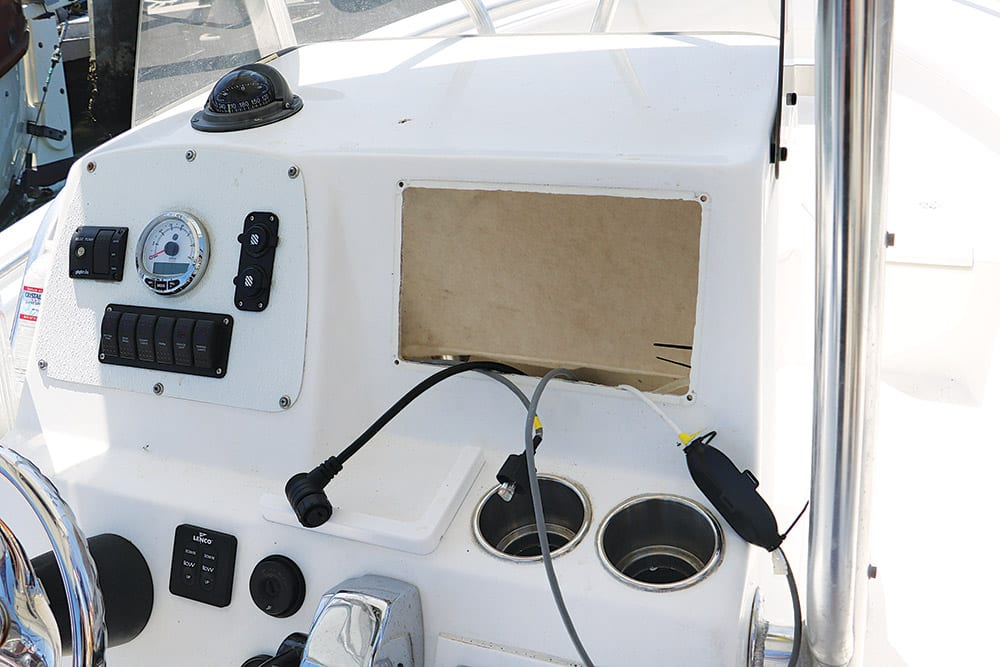
One-Way Screws
Installing flush- or panel-mount MFDs with one-way machine screws is another way to thwart would-be thieves. Also known as security screws, the heads of these allow you to tighten the screw against a nut, but they make it difficult to unbolt the fastener, enough so that a thief might give up. Some argue a thief might resort to cutting out the entire helm panel with a portable power saw, mangling the fiberglass in the process, but this is time-consuming, and the noise attracts attention. One-way screws can be removed, in case you want to replace an MFD, but it requires special techniques, more time than conventional screws, and usually two people. For bracket-mounted electronics, aftermarket locks that take the place of thumb screws help thwart thieves, Heffernan says.
Electronic Security Systems
Security systems from companies such as Glomex ZigBoat, GOST, Simrad BoatConnect and Siren monitor your boat around the clock with onboard sensors that connect to apps on smartphones, tablets and computers. While these systems offer tracking devices (in case your entire boat is stolen), the greatest value lies in the ability to alert you if someone tampers with the boat, Harper says.
“Preventing theft—rather than -reacting to it—is the only truly effective approach,” he says.
Systems are customizable. For -example, with a trailer boat, a motion detector senses approaching thieves at a distance of 3 to 5 feet. Siren calibrates its motion sensors according to body mass. “This allows it to distinguish between humans and smaller creatures to eliminate false alarms,” Harper says. “Accelerometers also detect any minute movement of the boat.”
Read Next: Security Solutions
Sensors also take the form of cables connected to equipment or items such as canvas snaps. Disconnecting the cable activates the sensor. Systems can sound a piercing alarm with a blinding strobe light, Harper says. Triggers also send alerts via a cellular network, so you can contact the authorities or respond in person. You can turn the system on and off remotely with your mobile -device or computer.
Insurance
The last backstop is a good insurance policy. “Having electronics covered with a lower deductible—an added endorsement—makes the decision to file a claim easier,” Croft says, pointing out that BoatU.S. offers endorsements that lower the deductible for claims relating to electronics to $250.
Ultimately, a determined thief will find a way to steal what he wants. But if you make it as difficult as possible to target your electronics, he is likely to abandon your boat and go looking for an easier target.
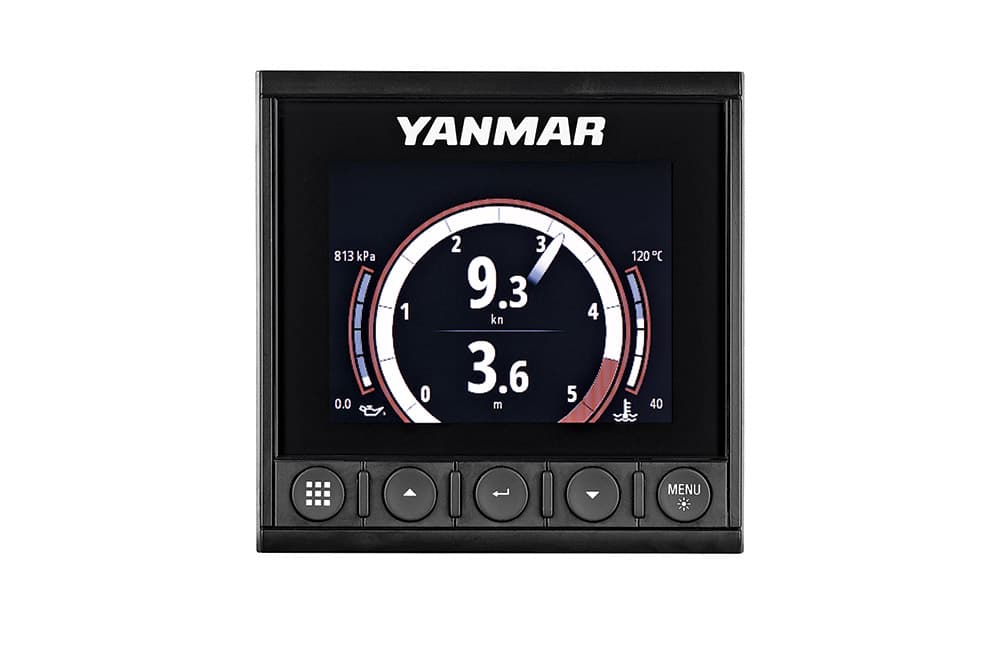
Diesel Display
Yanmar YD25 and YD42 multifunction color displays offer full monitoring of compatible Yanmar marine diesels, including engine speed, engine load, oil pressure and coolant temperature on four customizable screens. The YD25 features a transflective monochrome 2.5-inch LCD screen. The YD42 has a 4.1-inch screen. Both are weatherproof and NMEA 2000-compatible. Starting at $550 and $826, respectively; yanmarmarine.com
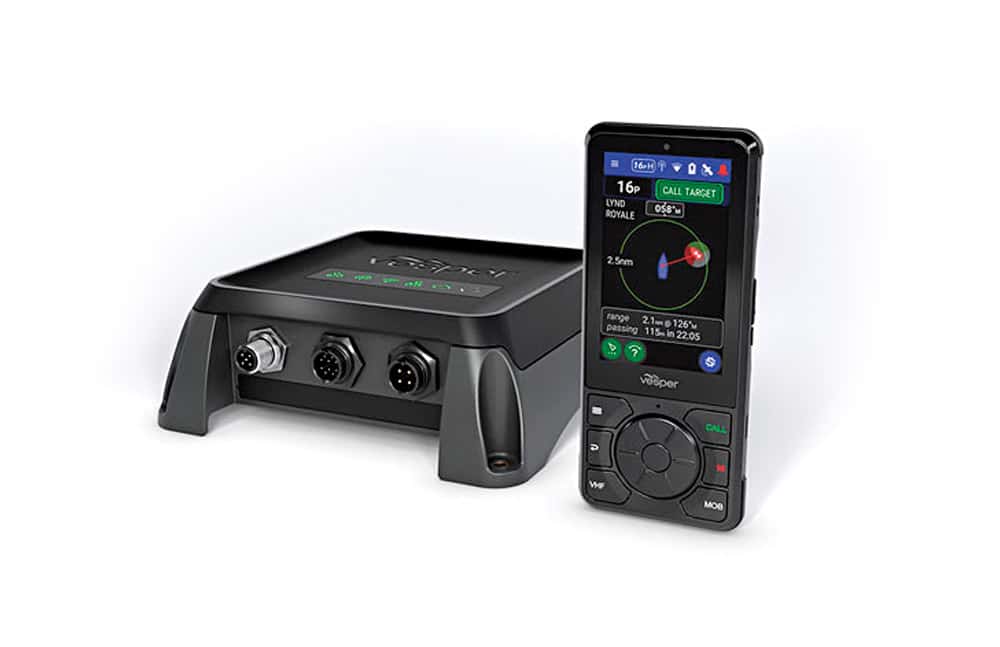
Radical Radio
Featuring a touchscreen handset, Vesper Marine’s Cortex combines a Class B AIS transponder and remote vessel monitor with VHF. SmartAIS technology monitors hazardous situations, sending alerts on the handsets and Wi-Fi-connected smartphones. If you’re ashore, the system alerts a smartphone via an app. It also warns of changes in wind speed and direction, and water depth. Starting at $1,799; vespermarine.com
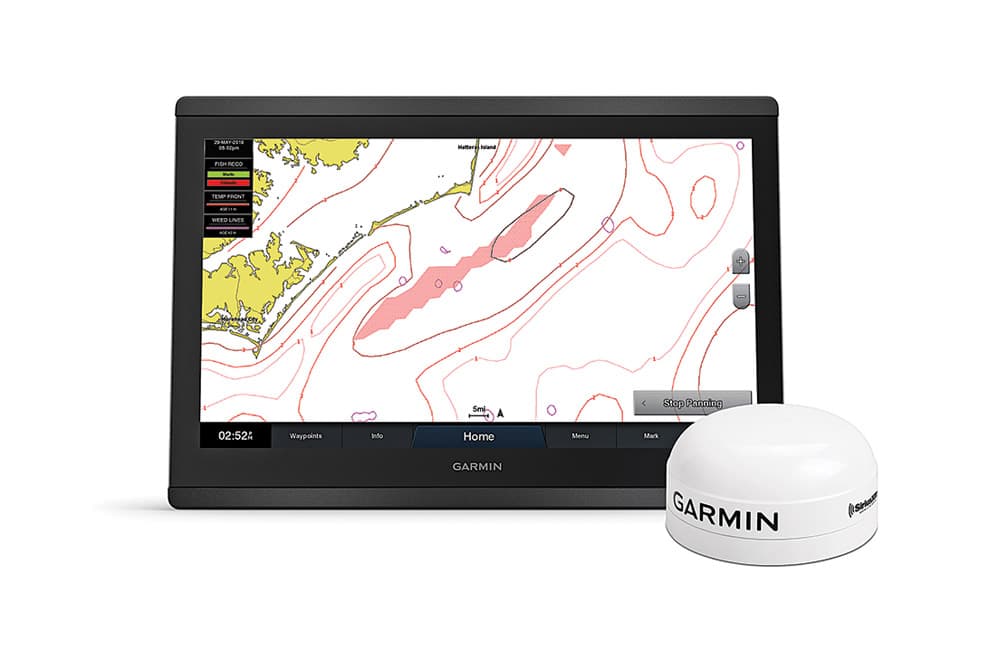
Satellite Savvy
Garmin’s GXM 54 satellite receiver supports SiriusXM’s new Fish Mapping and marine weather service. The service provides data to anglers beyond cell range about specific gamefish, weed lines, sea-surface height, sea-surface and subsurface temperatures, temperature-front strength, and plankton concentrations. $799.99 for the GXM 54, $99.99 a month for Fish Mapping; garmin.com/marine or siriusxm.com/fishmapping









